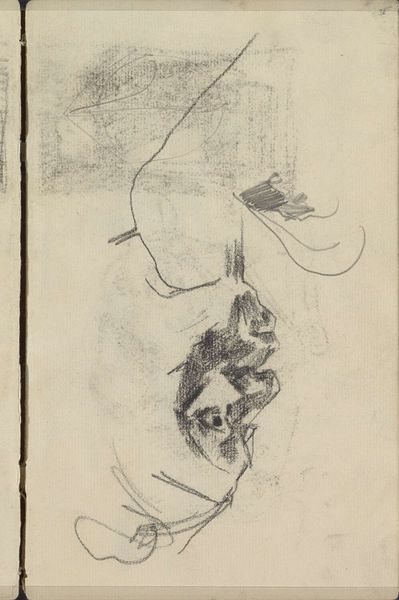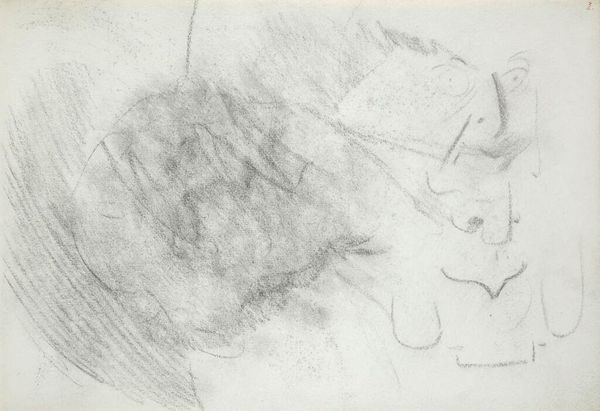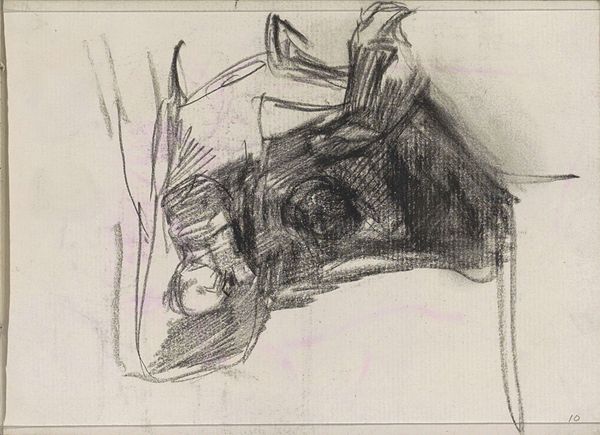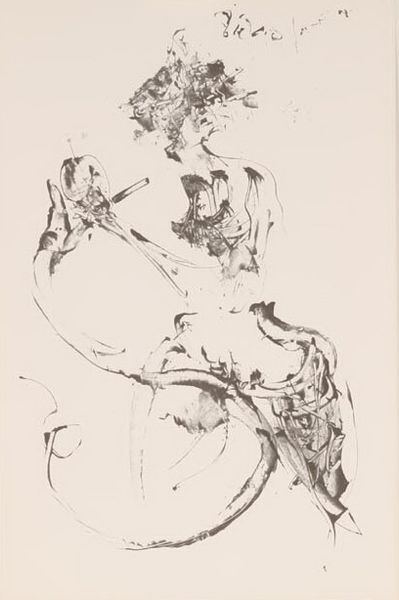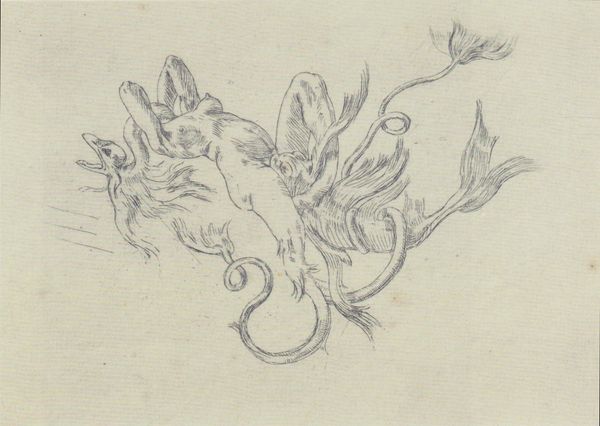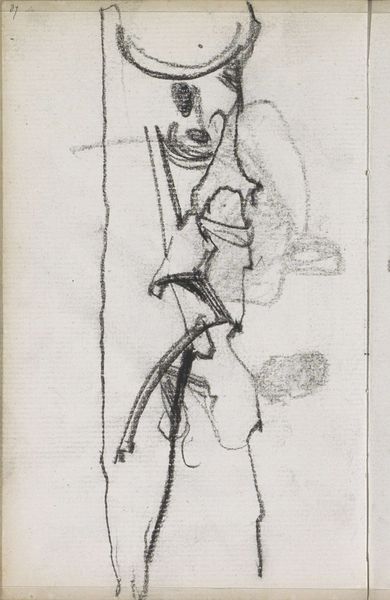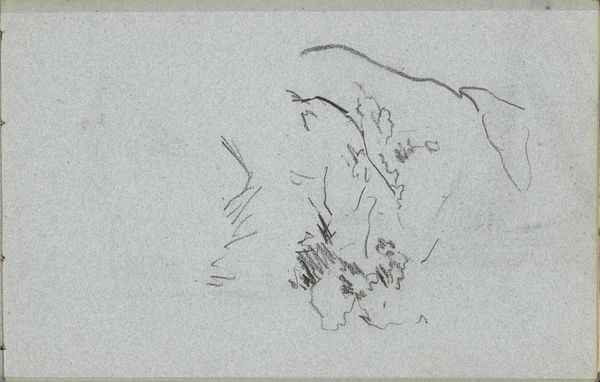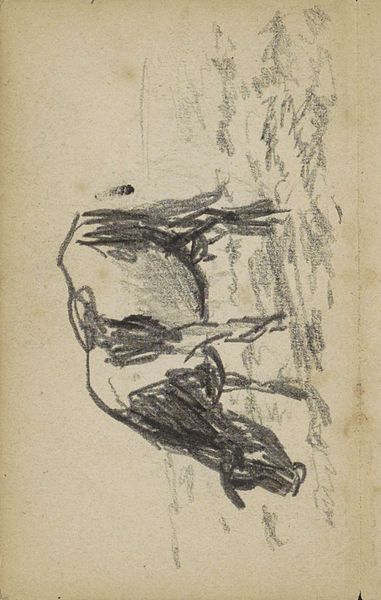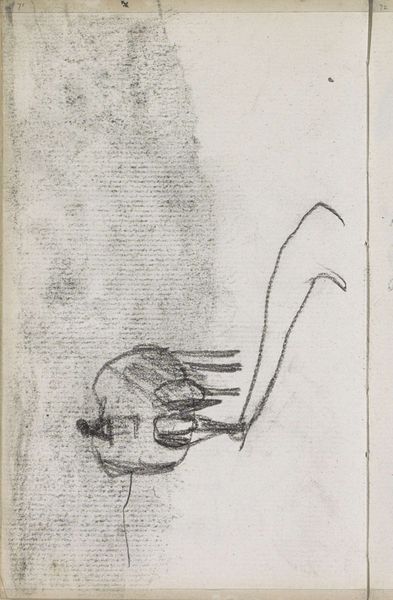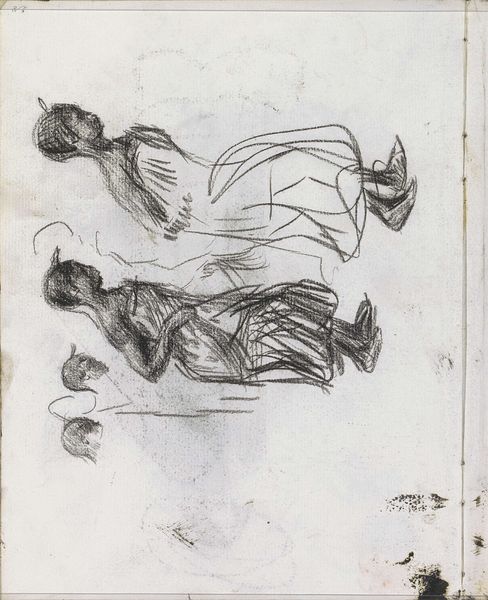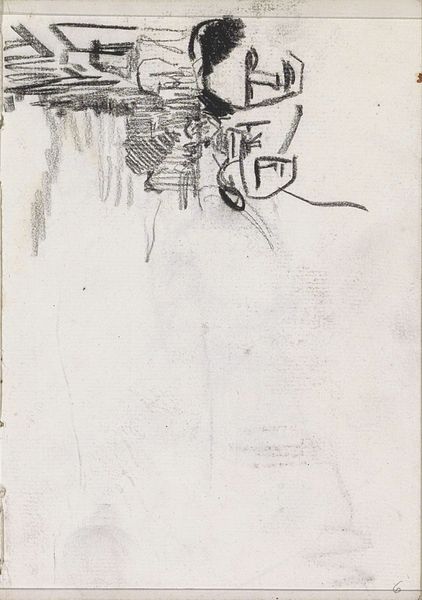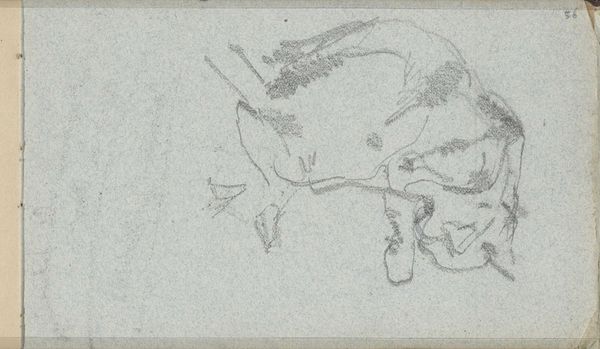
Copyright: Rijks Museum: Open Domain
Editor: A quick, almost gestural work. Stark and minimal. Curator: Indeed. Here we have Isaac Israels’ "Vrouw die een hond uitlaat," or "Woman walking a dog" made sometime between 1886 and 1934. Currently, it resides here at the Rijksmuseum. What do you notice about its construction? Editor: The layering is very apparent, the immediacy and roughness of the graphite is fascinating. I see a material dialogue between the grain of the paper and the pressure of the pencil creating varied tonality and texture. How do these elemental choices impact the artwork itself? Curator: The stark composition, figure and ground, work as oppositional forces; we could describe the forms as examples of binary signifiers in dialogue, perhaps emblematic of the woman’s control over the dog or perhaps indicative of a tension or instability of identity. I find that negative space crucial, wouldn't you agree? Editor: I think that's fascinating but potentially missing the context, considering this work’s period. I understand its symbolism but to read the materials feels essential too. Look at this from the standpoint of artistic labor. Israels is capturing a snippet of modern life in simple accessible strokes, surely engaging in accessible mediums allows greater viewership. It’s far less rarefied. Curator: An important social observation to consider. I suppose one could also observe that its formal sketchiness lends a quality of ephemeral modern life in the late 19th century—the fleeting movement. Perhaps more about representing a certain sensory quality... the dog darting? Editor: Yes, or more precisely what does readily available and cheap graphite as a medium afford in those sensory experiences of quickly jotted gestures. Curator: A perfect final insight on this subtle yet potent drawing. Editor: Indeed. Always more to be discovered, considering material as medium and message.
Comments
No comments
Be the first to comment and join the conversation on the ultimate creative platform.
